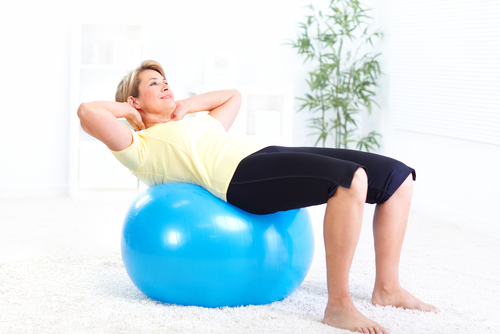
by John Harris
Working out is nothing short of awesome. Whether you’re lifting weights or running a marathon, things start out great, with every movement making you feel stronger, leaner, and ready to take on anything that the world – or the gym – has to throw at you.
Then the pain starts.
Once muscle soreness begins to kick in, usually during the tail-end of your workout and lasting long afterwards, the natural high that comes with working your body hard gives way to the groans that accompany pain with every twitch. Add on the fact that muscle pain resulting from a vigorous workout can last for days afterwards, and you’ve got yourself a recipe for general discomfort and a big dose of demotivation.
No pain, no gain? It doesn’t have to be that way, and following these four healthy tips to prevent muscle pain during and after an intensive workout can prove it:
1. Start Your Day with Coffee
Believe it or not, drinking coffee before your workout is one of the easiest ways to reduce the pain felt during and after a tough session. What’s the secret of this unexpected benefit of everyone’s favorite morning drink? Caffeine.
Caffeine has a variety of effects on the body, but one of the most prominent of them is its ability to affect the way that the brain and spinal cord process the feeling of pain. Once ingested, coffee’s most important ingredient travels through the bloodstream, blocking a compound called adenosine – a compound responsible for transferring energy, especially during high-impact activity. This helps to reduce stress on individual muscles, translating to less pain as you work them, and a much quicker healing time for muscles that are damaged during a workout.
Since the discovery of this benefit, various studies have shown conclusively that those who consume caffeine before exercise report feeling less aches and pain during and after every session, regardless of whether or not each study subject was a regular coffee drinker, making this a tip that will work for absolutely anyone.
2. Stretch and Stretch Some More
One of the biggest mistakes made by exercisers is failing to properly stretch before engaging in muscle-straining exercise, leading to all sorts of kinks and pulls that hurt when they happen, and sometimes long after.
Luckily, this mistake is easy to avoid by simply making stretching the first part of your routine each and every time you workout, giving your muscles their best chance at hard work without the unnecessary pain. The exact technique is up to you, so long as you be sure to give every limb and muscle a gentle stretch, from head to toe, before you move onto more strenuous movements.
During your stretching, you can also try myofascial techniques using foam ball or tennis ball to ease the pain.
3. Warm-up with Cardio
Sometimes, when your exercise goals revolve around learning how to build muscle, the idea of cardio-based activities seem useless, aimed more at those looking to burn fat than those looking to bulk up. No matter your fitness goals, though, light cardio has a similar effect on your muscles as stretching, making it an important part of starting off your workout on the right foot.
Thankfully, there’s no need to get too crazy; even a good number of jumping jacks, or a few minutes of jogging in place will be enough to take your stretching a step further, preparing your muscles for the work to come, and saving yourself the agony of ending things off on a painful note.
4. Water: A Friend of Muscles
Perhaps the most important tip on this list, drinking water comes in last only in order to make it more memorable when you recall the details of this article before your next session!
Your muscles have no better friend than simple water, a substance that keeps them hydrated enough to allow for fluid movement and far less risk for strains and tears. Doctors generally recommend drinking 8 to 10 eight-ounce glasses, but a better rule to follow is simply to drink each and every time you’re thirsty, allowing you to get all of the hydration your body needs, whether a hard core exercise session is on your schedule or not.
(This post was written by John Harris. John Harris is a health and fitness blogger. He is passionate about healthy food and active lifestyle.)








